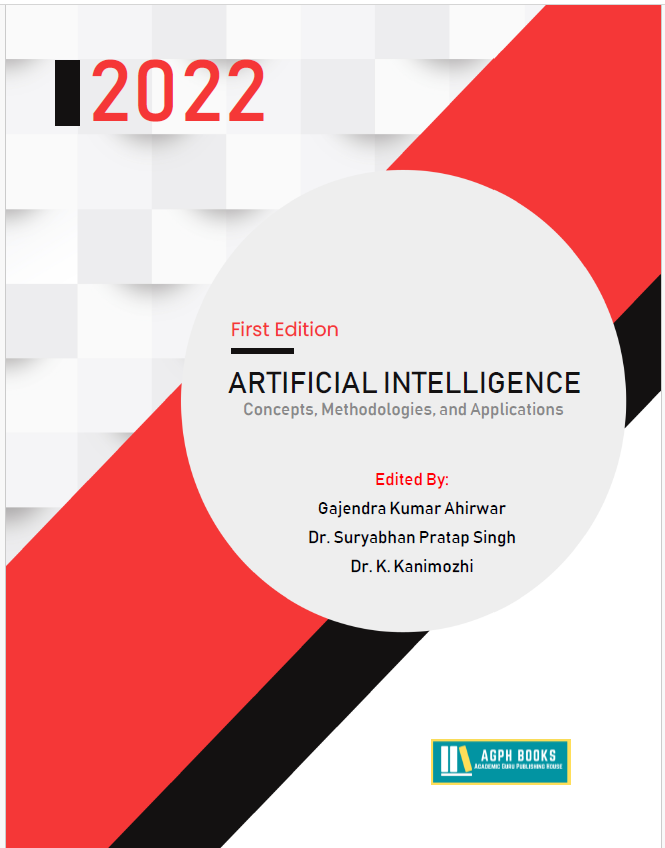A Schematic Review on Machine Learning Techniques and Its Importance in The Present Scenario
Keywords:
Machine Learning, Algorithm, research and industryAbstract
Machine learning is a dynamic area in the research as well as industry, with innovative techniques created all time. The pace and intricacy of the industry makes keeping up with the new tactics challenging even for specialists — and possibly daunting for newcomers. The objective of the subject is learning, that is, gaining skills or information through experience. Most typically, this implies synthesizing meaningful ideas from past facts. As such, there are many distinct forms of learning which you may face as a practitioner in the area of machine learning: from complete fields of research to individual methodologies. This paper reviews several techniques and algorithm that has been done in the field of machine learning along with their applications in different environments.
References
[1] M. M. Kumbure, C. Lohrmann, P. Luukka, and J. Porras, "Machine learning techniques and data for stock market forecasting: A literature review," Expert Syst. Appl., vol. 197, no. April 2021, p. 116659, 2022, https://doi.org/10.1016/j.eswa.2022.116659
[2] S. Kaisar and A. Chowdhury, "Integrating oversampling and ensemble-based machine learning techniques for an imbalanced dataset in dyslexia screening tests," ICT Express, no. xxxx, 2022. https://doi.org/10.1016/j.icte.2022.02.011
[3] S. Oller-Moreno, K. Kloiber, P. Machart, and S. Bonn, "Algorithmic advances in machine learning for single-cell expression analysis," Curr. Opin. Syst. Biol., vol. 25, pp. 27-33, 2021, https://doi.org/10.1016/j.coisb.2021.02.002
[4] X. Shu et al., "State of health prediction of lithium-ion batteries based on machine learning: Advances and perspectives," iScience, vol. 24, no. 11, 2021, https://doi.org/10.1016/j.isci.2021.103265
[5] Z. Wang et al., "Advanced big-data/machine-learning techniques for optimization and performance enhancement of the heat pipe technology - A review and prospective study," Appl. Energy, vol. 294, no. March, p. 116969, 2021, https://doi.org/10.1016/j.apenergy.2021.116969
[6] S. Tahvili, L. Hatvani, E. Ramentol, R. Pimentel, W. Afzal, and F. Herrera, "A novel methodology to classify test cases using natural language processing and imbalanced learning," Eng. Appl. Artif. Intell., vol. 95, no. October 2019, p. 103878, 2020, https://doi.org/10.1016/j.engappai.2020.103878
[7] B. N. Hiremath and M. M. Patil, "Enhancing Optimized Personalized Therapy in Clinical Decision Support System using Natural Language Processing," J. King Saud Univ. - Comput. Inf. Sci., no. xxxx, 2020, https://doi.org/10.1016/j.jksuci.2020.03.006
[8] C. Chen, Y. Zuo, W. Ye, X. Li, Z. Deng, and S. P. Ong, "A Critical Review of Machine Learning of Energy Materials," Adv. Energy Mater., vol. 10, no. 8, pp. 1-36, 2020,https://doi.org/10.1002/aenm.201903242
[9] A. J. Larkoski, I. Moult, and B. Nachman, "Jet substructure at the Large Hadron Collider: A review of recent advances in theory and machine learning," Phys. Rep., vol. 841, pp. 1-63, 2020, https://doi.org/10.1016/j.physrep.2019.11.001
[10] H. Seo et al., "Machine learning techniques for biomedical image segmentation: An overview of technical aspects and introduction to state-of-art applications," Med. Phys., vol. 47, no. 5, pp. e148-e167, 2020, https://doi.org/10.1002/mp.13649
[11] F. Dalipi, A. S. Imran, and Z. Kastrati, "MOOC dropout prediction using machine learning techniques: Review and research challenges," IEEE Glob. Eng. Educ. Conf. EDUCON, vol. 2018-April, pp. 1007-1014, 2018, https://doi.org/10.1109/EDUCON.2018.8363340
[12] M. Cuperlovic-Culf, "Machine learning methods for analysis of metabolic data and metabolic pathway modeling," Metabolites, vol. 8, no. 1, 2018, https://doi.org/10.3390/metabo8010004




